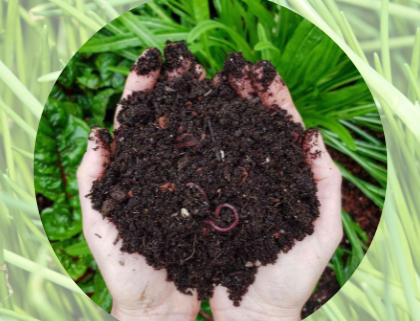Happy Compost Awareness Week
Happy Compost Awareness Week! Looking to start a compost but stuck on where to begin? Look no further, we are breaking it down into easy peasy steps.
Composting is a very beneficial and simple way to reduce everyday waste. The world needs composting more than ever now with landfills becoming even more full by the second and recycling markets declining. Not only does composting divert waste from being sent to our landfill, but it also makes an amazing organic and chemical-free fertilizer for your beautiful garden! Ultimately it’s a chain-reaction; by using compost in your garden, plants will grow more strong and healthy, and thus attract more pollinators and wildlife.
So how do you create a compost? There are many different methods of creating a compost, it all depends on personal preference. The first method is creating a pile. This is the simplest and most inexpensive way to compost. This method is piling the required objects in a pile in your backyard and turning it with a shovel or rake occasionally. The downside to a pile is that it often attracts rodents. The second method is a barrel or trough. This method is putting all the compostable materials in a barrel or trough and turning occasionally. The downside to the barrel method is the complication of turning the materials.The last method is the rotating bin, this is a bin you can purchase on the internet or at any local hardware store. The bin is equipped to be able to rotate, which means hands-free turning of your materials! The downside to the rotating bin is sometimes the legs of the bin will rot, especially for beachside properties, so make sure when choosing your bin you find one made of sturdy non-rusting material! No matter which method you use, as long as you use the correct materials, turn your materials, and give it the correct amount of water and sun, your compost will thrive!
After choosing your method of composting, let’s talk about how to set it up! First you’ll want to place your bin in a dry shady area in your yard. After you’ve placed your pile or bin, next you’ll want to spread your first layer of “browns”. The brown materials create the Carbon necessary to break down the materials in your pile or bin. Brown materials include things such as; fall leaves, pine needles, twigs, straw or hay, sawdust, paper (newspaper, writing paper, etc. NON-GLOSSY), dryer lint, cotton fabric, and corrugated cardboard. Try to shred most of these things into relatively smaller pieces before adding to your pile or bin. Once you have your initial layer of browns, the next step is to add your layer of “greens”. Greens provide Nitrogen to the bin to help in combination with the Carbon to break down all of the materials in the bin. Green materials include things such as; grass clippings, coffee grounds/tea bags, vegetable and fruit scraps, plant trimmings, weeds, eggshells, animal manure, and seaweed.
Once your brown and green layers are added, now we will add a layer of garden soil. The next step is important, and one that many people miss, add water! Your three layers need to be moistened, it should feel like a wrung out washcloth, just enough to moisten it all. The water plays an important role as it helps in “heating up” your pile and maintaining the correct temperature for your pile. After you moisten the layers, time to add another layer of browns and greens, you should have more brown layers than green. After you’re done adding your layers, now is time to discuss maintenance of your bin.
As materials are collected from your home add them into your compost bin. Many people mistakenly think that maintaining a compost bin is difficult and requires every-day maintenance, this is false. Compost bins and piles only need to be turned 1-2 times per week, this rotation is essential to keeping a balance in your bin, it allows oxygen into the layers of material and thus helps speed up the process of decomposition. Besides turning it 1-2 times per week, just check in on your bin to see the progress and make sure things are going as they are supposed to. After about 1-2 months, you’ll have amazingly rich compost to add to your garden and make your plants smile with joy!
Still have questions about composting or would like to have a diagnosis for an issue you’re having with your materials? Contact Environmental Programs Coordinator, Kaylyn Palmer at kaylynpalmerkbb@gmail.com.





